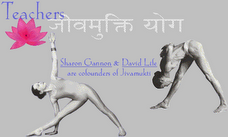Lord Śiva is the original yogi. His main attributes are his trident, which represent the three gunas; snakes that show he is beyond the power of death and also represent Kundalini; his wild, unkempt hair that he refuses to shorn; and a tiger skin upon which he sits perched, that represents the mind.
Lord Śiva is full of contradictions. He is self-controlled and celibate, but also the original "wild" man. He is both static (often depicted as in a meditative trance) and dynamic (see as the Cosmic Dancer). He is the greatest of renouncers (the master Yogi) as well as the ideal lover (joined with Shakti). As the Cosmic Dancer, Lord Nataraja, his dance is the interplay of both destruction and creation, a dance of death and regeneration. The joining of all these contradictions in the body of Lord Śiva represents the teaching that all seemingly opposites that exist (good/evil, female/male, birth/death) eventually merge into one, into oneness. Into the ONE that is, the only reality, into Brahman.
Lord Śiva represents the Ajna Chakra, the third eye center. His spouse, Shakti, is the coiled snake named Kundalini that lies dormant at the Muladhara Chakra (pelvic area). The practices of yoga are designed to awaken Kundalini from her respose and lead her up the sushumna nadi, the central energy channel, through all the chakras until she reaches her beloved Śiva at Ajna. The wedding of Kundalini with Shiva is a symbol of the highest bliss attainable by an individual soul. This union of Śiva-Shakti is the union of yoga, the union of opposities, the realization of ONENESS. This is what we all work towards when practicing yoga.
Other names for Śiva:
Mahāyogi (Sanskrit महायोगी)- The Supreme Yogi
Nāgaraja (Sanskrit नागराज) - King of snakes
Shambhu (Sanskrit शम्भु) - Abode of Joy
Tryambakam (Sanskrit त्र्यम्बकम्) - Three-Eyed One, i.e. All-Knowing
Go here for a free desktop picture of Lord Śiva: http://www.sanatansociety.com/free_stuff/free_desktop_wallpaper_hindu_gods.htm

















1 comment:
Thanks for writing this.
Post a Comment